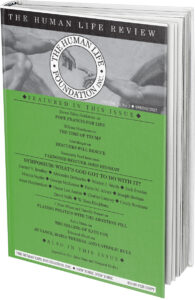Transfiguration and Hiroshima
At exactly fifteen minutes past eight in the morning on August 6, 1945, an American B-29 bomber dropped the world’s first atomic bomb over the Japanese city of Hiroshima. The explosion killed an estimated one hundred thousand people.
John Hersey, a journalist who had been brought up in China as the son of American missionaries, wrote an essay entitled “Hiroshima” that was published one year later in the August 31, 1946, edition of the New Yorker magazine. It quickly became the most admired treatment of the subject. He simply told the stories of six people who had survived the bombing: a Jesuit priest, a widowed seamstress, two doctors, a Methodist minister, and a young woman who worked in a factory. This is how Hersey describes the actual event: “There was no sound of planes. The morning was still; the place was cool and pleasant. Then a tremendous flash of light cut across the sky. Mr. Tanimoto (the minister) has a distinct recollection that it travelled from east to west, from the city toward the hills. It seemed a sheet of sun.”
The 78th anniversary of the Hiroshima bombing is coming up on a day which also celebrates the Transfiguration, when “Jesus took with him Peter and James, and John his brother, and led them up a high mountain apart. And he was transfigured before them, and his face shone like the sun, and his garments became white as light” (Matthew 17:1-2). Every year the light of divine glory that Christians celebrate on August 6 coincides with the memory of that “tremendous flash of light (that) cut across the sky” in Hiroshima, which “seemed a sheet of sun.”
According the Book of Genesis light was the first thing God created: “The earth was without form and void, and darkness was upon the face of the deep; and the Spirit of God was moving over the face of the waters. And God said, ‘Let there be light’; and there was light” (Genesis 1:2-3). Ancient commentators speculate that light is the appropriate beginning to creation, because light, being without density, is the substance most akin to the Creator’s purely spiritual nature.
The Transfiguration of Jesus directs our attention to Jesus Christ the Word of God in whom, from the beginning “was life, and the life was the light of men. The light shines in the darkness, and the darkness has not overcome it” (John 1: 4-5). Our faith is fixed upon divine light shining on in darkness. On earth, we cannot see the light of God directly; but like electric energy that operates invisibly, the light that is God’s first creation permeates the whole of his creation; that primordial, created light comes closest to visibility in all the forms of life; it can be most clearly glimpsed in the human face that radiates intelligence and love.
The light that God is—uncreated light, Transfiguration light—is present under the veil of the sacraments: in the elevated Host and Chalice; in the pouring of baptismal water; in the giving of absolution; and in the exchange of marriage vows. That uncreated light is present around holy persons, saints, whose halos signify its presence. We are not yet meant to see the light that God is; he is present to us in the darkness of this world as inner light, the light of grace, which will give place to the light of glory, becoming fully visible at last, when we are transfigured in the resurrection.
The light of Hiroshima, which “seemed a sheet of sun,” was a sign of worldly power, not divine grace; it was a sign of destruction, not creation; it was a sign we hope may never be seen again, not one we hope to see in eternity. Atomic weapons far more powerful than the ones that brought an end to World War II wait ready to be used in World War III. Let us pray on August 6 that it never happens.









